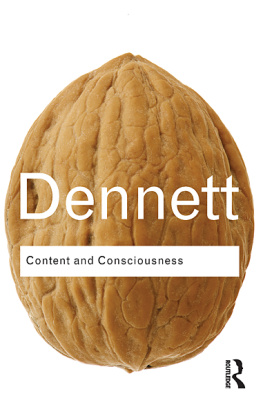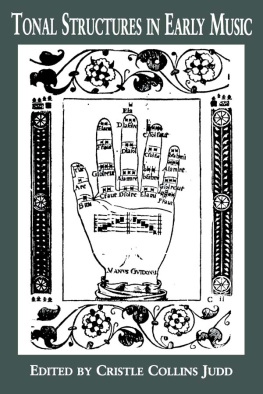First published 2000 by Garland Publishing, Inc.
This edition first published in 2021 by Routledge 605 Third Avenue, New York, NY 10017 and by Routledge 2 Park Square, Milton Park, Abingdon, Oxon OXl4 4RN
Routledge is an imprint of the Taylor & Francis Group, an injorma business
Copyright 2000 by Jeanette Rodda
All rights reserved. No part of this book may be reprinted or reproduced or utilised in any form or by any electronic. mechanical, or other means, now known or hereafter invented, including photocopying and recording. or in any information storage or retrieval system, without permission in writing from the publishers.
Notice: Product or corporate names may be trademarks or registered trademarks, and are used only for identification and explanation without intent to infringe.
Publishers Note The publisher has gone to great lengths to ensure the quality of this reprint but points out that some imperfections in the original copies may be apparent.
Disclaimer The publisher has made every effort to trace copyright holders and welcomes correspondence from those they have been unable to contact.
Library of Congress Cataloging-in-Publication Data Rodda, Jeanette. Go ye and study the beehive : the making of a western working class / Jeanette Rodda. p. cm - (Garland studies in the history of American labor). Includes bibliographical references and index. ISBN 0-8153-2653-X (alk. paper) 1. Miners-West (U.S.)-History. 2. Miners-Labor unions-West (U.S.)-History. 3. Labor movement-West (U.S.)-History. I. Title. II. Series.
HD8039.M61U491999 338.76220978 21dc21 99-042072
ISBN 13: 978-1-03-216559-2 (hbk) ISBN 13: 978-1-03-216706-0 (pbk) ISBN 13: 978-1-00-324940-5 (ebk)
DOI: 10.4324/9781003249405
Acknowledgments
My thanks go first to the people of the mining town of Butte, Montana (family and friends) who gave me my primary inspiration and the perspective from which I wrote this book. I am particularly indebted to my late aunt and uncle, Mae Gustafson Toy and Joseph Toy, a waitress and a miner, whose support never waivered.
Thanks go also to the Northern Arizona University History Department for financial support in the form of the McAllister Transition Fellowship and the Downum Award, and to the Butte Historical Society for the Ray Calkins Fellowship. I wish also to acknowledge the time and energy invested, and the invaluable advice offered by my dissertation committee: co-chairs Karen Powers and George Lubick, and committee members, Valeen Avery, Susan Deeds, and Julie Schimmel.
Finally, I would I like to thank my sons, Ryan and Geoffrey Taylor, for their understanding and patienceto Ryan for making me smile and to Geoff for his many wonderful dinners.
INTRODUCTION Go Ye and Study the Beehive1 The Making of a Western Working Class
More than any other occupation, the long history of mining raises issues of class and dependency, of men, women, and children bound to permanent wage work or forced labor underground with small hope of securing an independent living. Free Roman citizens occasionally mined for wages, though the ancients preferred the forced labor of slaves and criminals. In medieval and early modern Europe, entire populations of mining villages, including women and children, performed wage labor both above and below ground.
Miners are the ultimate proletariat. In the popular imagination, miners and their families often take on the semblance of Van Goghs Potato Eaters, dirty and deformed by their work, and reduced to the level of domestic beasts whose thoughts seldom go beyond a full stomach and a warm place to sleep. Only when their simple basic needs are not met do such workers act collectively. Then, they become an unchained tiger: a menacing, mutinous mob bent on destroying private property, stringing up capitalists, and toppling governments.2
The mob image of miners dies hard. A recent photo on the front page of The Arizona Republic (Phoenix) shows police in full riot gear, including gas masks, massed inside the lobby of the Phelps Dodge Mining Corporation. Outside, in 101 degree heat, some 200 miners and their supporters peacefully protested the companys union-busting activities in its Chino, New Mexico mine. A small group of retired miners planned to enter company headquarters and pour buckets of pennies on the floor to symbolize labors share of Phelps Dodges record profits for the year. The photo is a classic; armed and vigilant defenders of corporate capital facing an unseen enemy. No photo of the peaceful rally outside balances the of armed police in riot gear staving off mob violence.3
Perceptions like this have a long history. In the past, widely-read general historians, when they considered miners at all, tended to characterize them as the other, or alien to civilized society. Lewis Mumford in Technics and Civilization describes European mining towns as places of slatternly disorder, where the brutalized miners most profound hope is to win money enough at the gambling table to allow him to abandon his occupation. In general, mining districts are the very image of backwardness, isolation, raw animosities and lethal struggles, where barbarism colors the entire picture.4
In a similar vein, miners in the American West often became objects of another stereotype: that of the frontier savage. These are violent, shiftless, pleasure-seeking individuals, sorely in need of civilizing, preferably in the sobering form of steady wage work. Some images of mining life in early California by prominent artists like Charles Nahl and J.M. Hutchings portray Argonauts with the sub-human countenances of Van Goghs Potato Eaters. Coarse, primitive-looking individuals with minimal control of their base instincts charge into places of business on horseback, grinning madly and clutching glasses of whiskey. Idle men in mobs are featured prominently: bent not on social revolution, but packed around gaming tables, gaping at lynchings or at the sight of a rare woman, viewing brawls with casual indifference or undisguised horror, depending on their length of residence in the diggings.5
Lee Marvins character in the film, Paint Your Wagon, typecasts western miners in the same wayas fleetingly released from the discipline of wage work by a gold rush, dangerously out of control, and literally a vanishing breed. Despite a few sympathetic film portrayals like Salt of the Earth, most popular images of miners feature alien beings, removed from the interests and goals of the dominant society.
Like all popular images, perceptions of workers reveal as much about the nature of the dominant culture as about the complex experiences of workers themselves. The main purpose of this study is to document and analyze the development of working-class culture in the mining camps of the American West. And, because working-class culture forms as diverse groups of workers respond to the capitalist transformation of culture, this study seeks out a multitude of experiences, including those of the independent Forty-Niners of California and of miners who migrated west from the lead, gold, and coal mines of the East.






